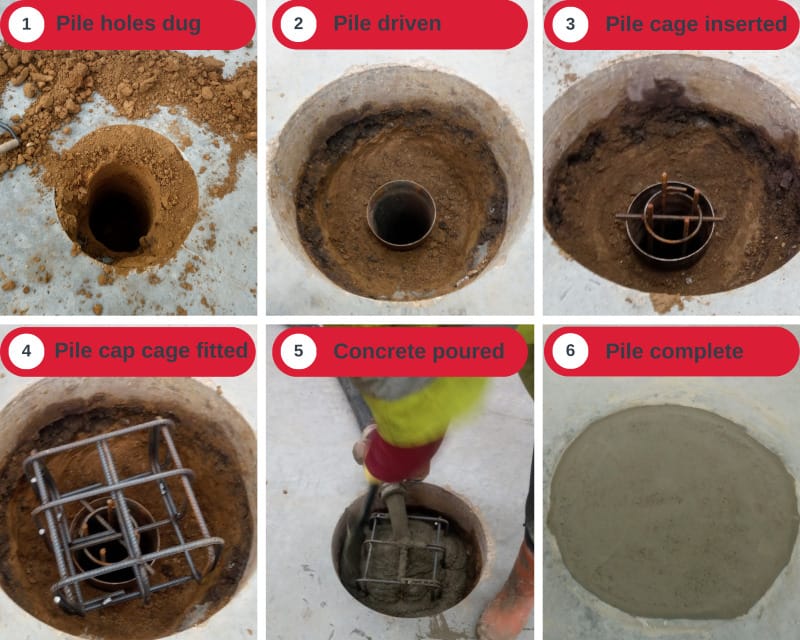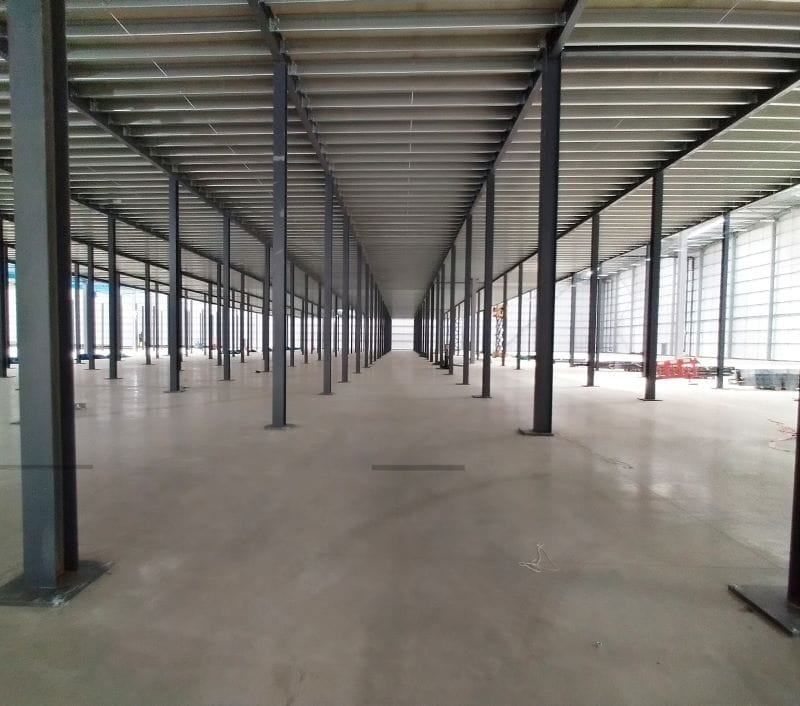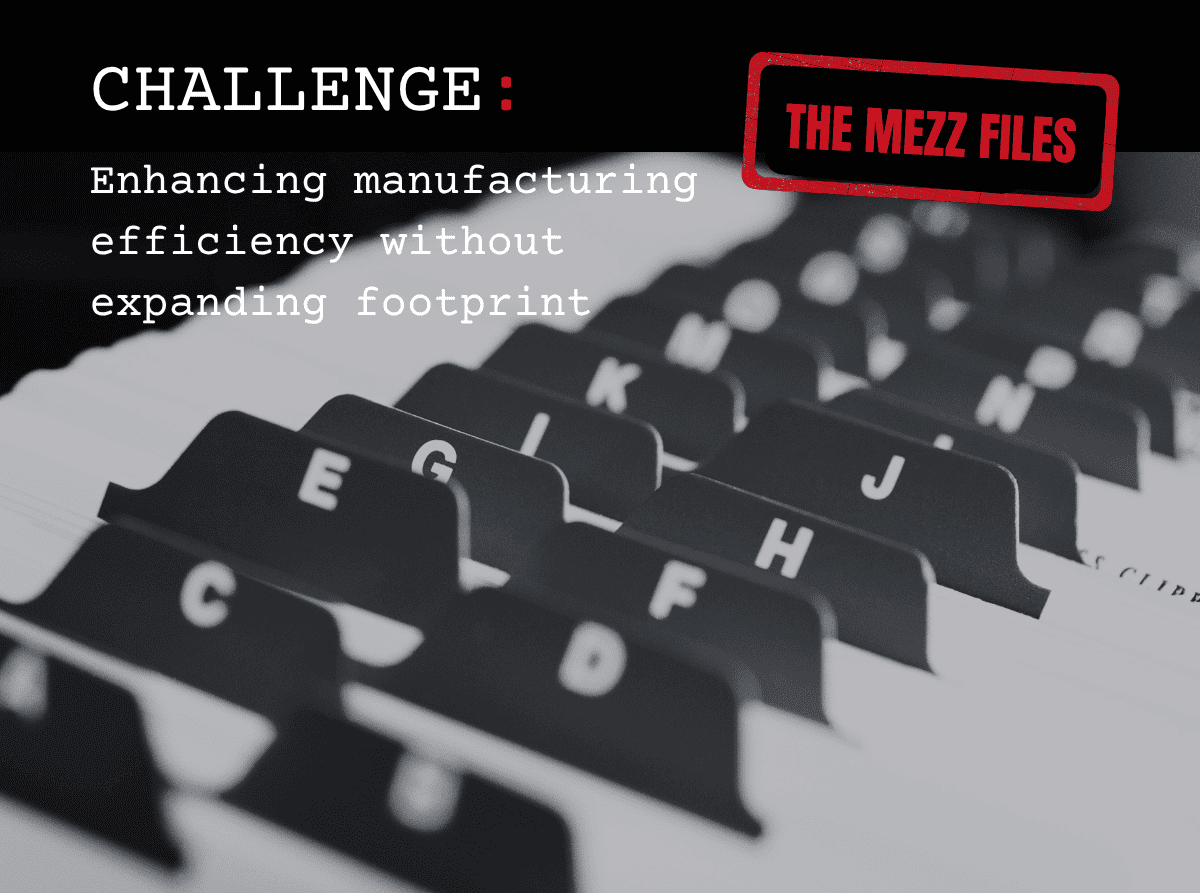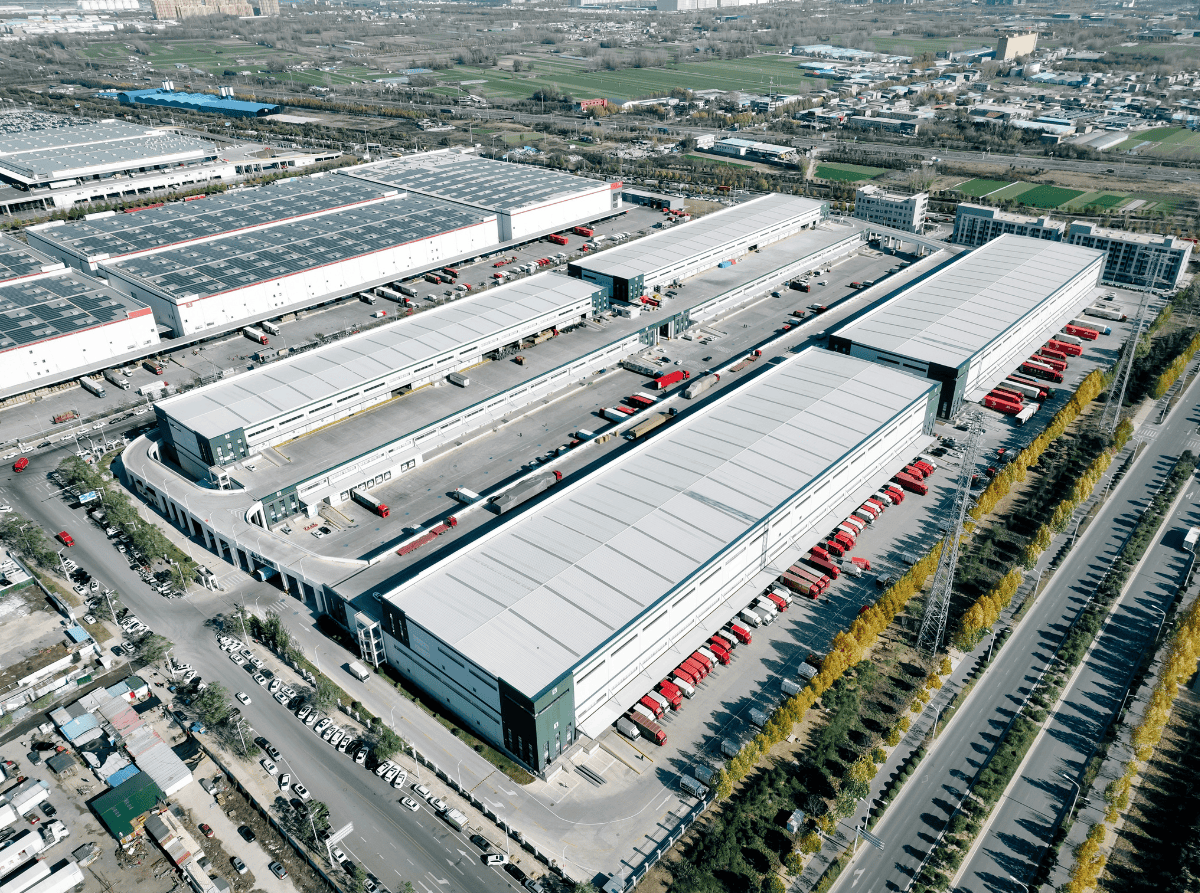Preparing your site for a Hi-Level mezzanine is critical, ensuring your slab can withstand both the weight of the structure and the load you intend to place upon it.
This is both a safety issue and essential to your business maximising the value of your mezzanine.
What is piling?
Piling is our hidden magic when the load requirement is greater than the slab will take.
Piles can be constructed of concrete, steel or timber and, when installed vertically into soft or known poor ground, provides structural support to foundations, slabs etc.
The piles are driven or augured to whatever depth is necessary to reach suitable bearing strata – dense clays, gravel beds or rock. Pile depths can vary greatly between three metres and thirty metres, subject to the local ground conditions.
By using piles for both new or existing slabs that are required to bear additional loads, such as mezzanine flooring structures, projects benefit by greater efficiency and related reduced costs when compared with many conventional options.
Piles come in a variety of forms but principally in two types, ‘driven end bearing’ or ‘continuous flight auger’ (CFA) the latter relies on skin friction between the pile shaft and the strata through which it passes.
At Hi-Level Mezzanines our structural engineering experience gives us the expertise to make sure you get the right option for your company’s specific needs.

Piling for automation
Certain forms of automation impose relatively high loads on mezzanine floors, such as AutoStore – an automated storage and retrieval system using robots within a cubic layout. Ocado has a similar system, shown in this film.
We are currently working with multiple companies that supply AutoStore to ensure site preparations are fit for purpose. Heavy automated equipment generally requires additional foundations to strengthen the slab, and that normally means piling.
The starting point is to carry out a geological survey to obtain a core sample, and we work with a ground investigation company as part of our service to clients.
Once we have checked the ground slab and the underlying soil conditions if we confirm pile foundations are required to strengthen it, we complete further tests. These establish where the bedrock is if there is any, or if not, the friction capabilities of the soil.
Considerations for piling
- It is logical to opt for the biggest column grid, because that means fewer piles.
- But there is a fine balance, because a grid that is too big will increase the load on the pile – so a bigger pile will be needed.
The key to a successful piling solution is based on good soil investigation, an experienced pile company and the teamwork of those who are producing the end product, be it a slab, a building or a mezzanine floor.
As both a mezzanine column grid and piling have both cost and practical usage implications, the expert structural engineers at Hi-Level Mezzanines will advise on the best options for each project and client.

Hi-Level Mezzanines provides mezzanine floors of the highest quality in the industry, yet remaining competitively priced thanks to the expertise of our team of qualified structural engineers, innovative digital design process and advanced solutions.
For 30 years we have been creating space for amazing things to happen. Contact us today for more information at [email protected] or call 01730 237 190.






